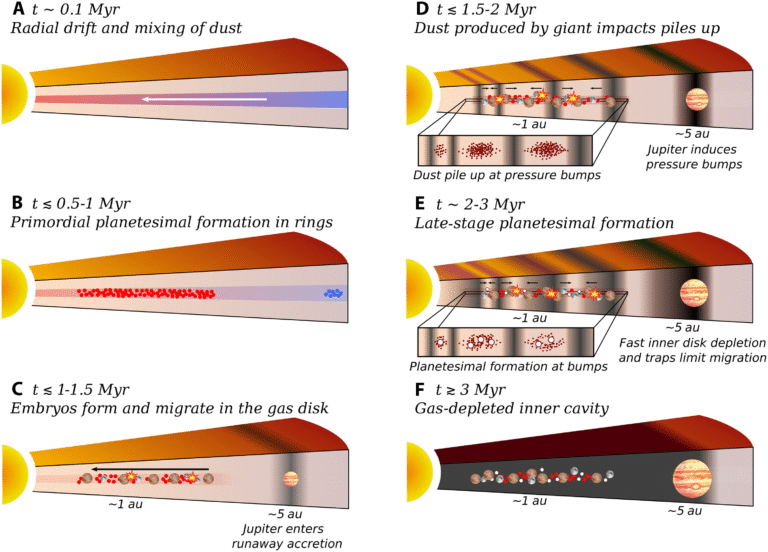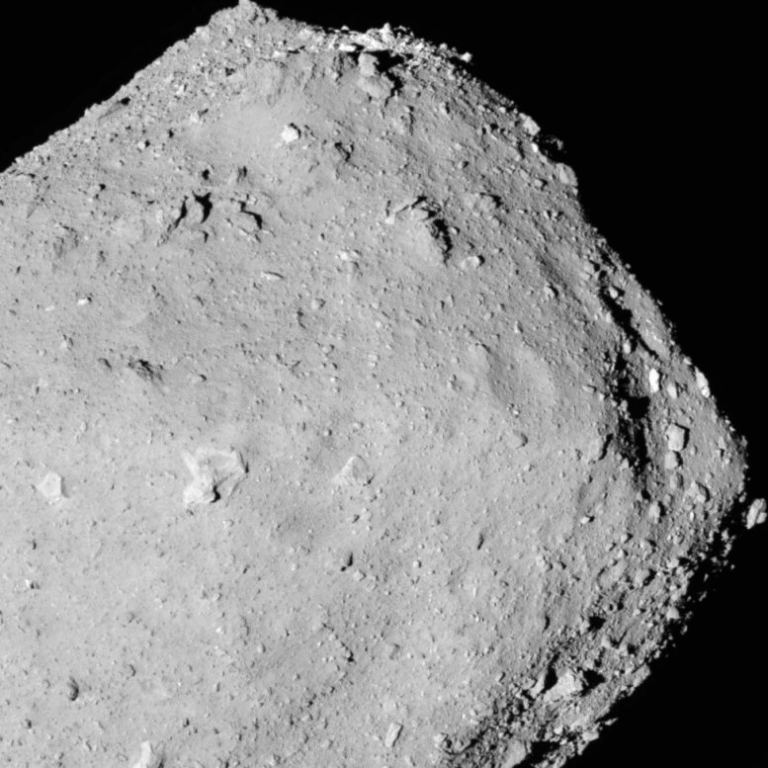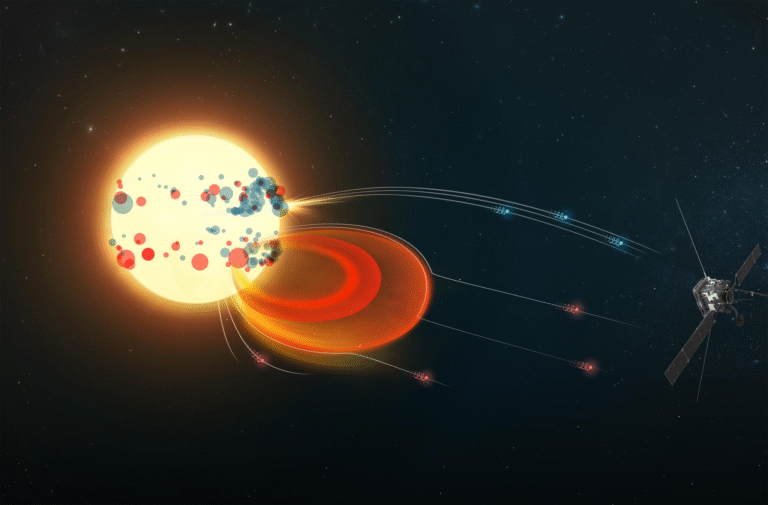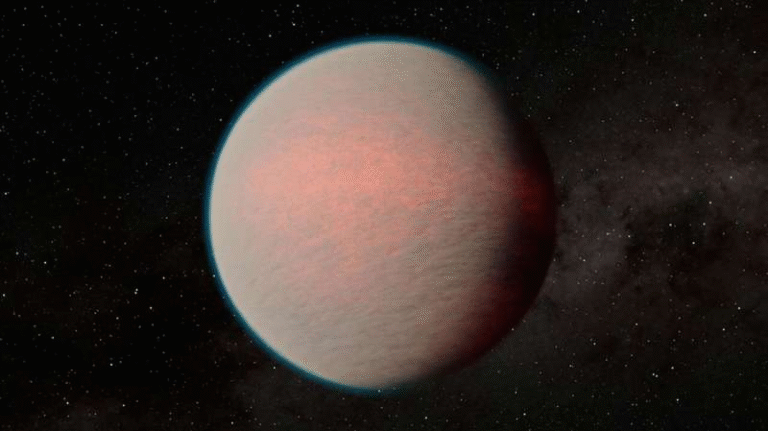JWST’s New Observations Reveal How Volcanic and Magnetospheric Forces Shape Jupiter’s Fiery Moon Io
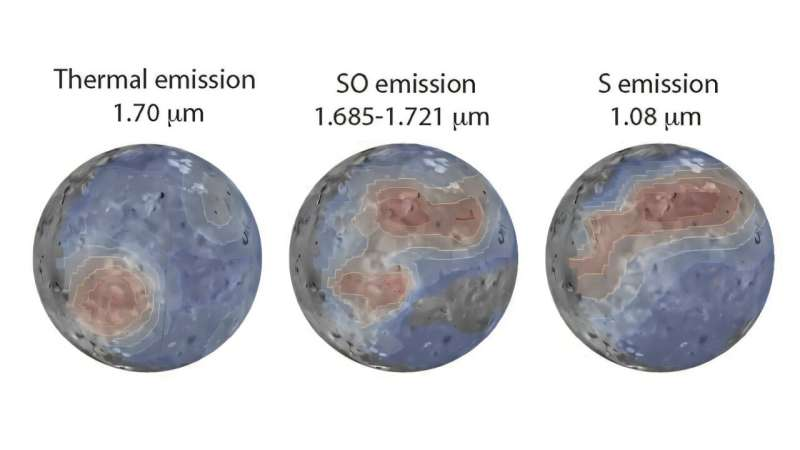
Jupiter’s moon Io has always stood out as one of the most extreme worlds in our Solar System. With more than 400 active volcanoes, towering volcanic mountains, and vast lakes of molten lava—some nearly 200 kilometers wide—Io is the kind of place that makes even Earth’s most dramatic volcanoes look modest. Now, new observations from the James Webb Space Telescope (JWST) are giving scientists the clearest look yet at what drives this constant chaos, and the findings reveal a surprising interplay between Io’s internal heat and Jupiter’s powerful magnetic environment.
In a newly published study led by astronomer Imke de Pater of UC Berkeley, scientists used JWST’s Near Infrared Spectrograph (NIRSpec) to analyze Io in 2022 and 2023, observing the moon during eclipse—when it falls into Jupiter’s shadow. These observations captured heat signatures, sulfur-bearing molecules, and even neutral sulfur atoms, revealing both volcanic changes on the surface and complex atmospheric interactions taking place above it.
One of the biggest highlights of the research is the first-ever near-infrared detection of neutral sulfur atoms, referred to as [SI]. This is a major step because sulfur—and the many forms it takes—acts like a diagnostic tool for understanding Io’s volcanic processes, atmospheric chemistry, and the influence of Jupiter’s magnetosphere. Alongside this, JWST also detected sulfur monoxide (SO) in an excited state, helping scientists determine which emissions originate from volcanic activity and which come from magnetospheric interactions.
Io’s Intense Volcanic Identity
Unlike Earth, which gets its interior heat from radioactive decay and leftover formation heat, Io’s energy comes from a violent gravitational tug-of-war. Jupiter, being massively larger, constantly pulls at Io, but so do the neighboring Galilean moons: Europa, Ganymede, and Callisto. As Io orbits, these varying gravitational forces stretch and compress the moon’s interior. This constant flexing generates frictional heat—known as tidal heating—which melts rock into magma and fuels the relentless volcanic eruptions across the moon’s surface.
Io is only about one-quarter the size of Earth, yet its volcanic activity outshines anything in the Solar System. Its surface is coated in red, yellow, and orange sulfur deposits from frequent eruptions, and new lava flows regularly reshape the terrain.
During their observations, the JWST team witnessed meaningful changes in Io’s volcanic landscape. The moon’s largest lava lake, Loki Patera, was seen forming a new crust, continuing a pattern observed over the past two decades. Meanwhile, the Kanehekili Fluctus region—known for a major eruption in 2022—showed lava flows that had spread across more than 4,300 square kilometers, expanding about four times since their last observation. These detailed updates demonstrate how Io’s surface remains in constant motion.
The First Near-Infrared Detection of Neutral Sulfur
A central scientific breakthrough from the new study is the detection of neutral atomic sulfur ([SI]) in the near-infrared for the first time.
Interestingly, this sulfur does not come directly from the volcanoes. Instead, the emission is produced when electrons collide with sulfur atoms in Io’s atmosphere, exciting them and causing them to emit light at very specific wavelengths.
But where do these energetic electrons come from?
The answer lies in Io’s complex bond with Jupiter. Io is embedded within Jupiter’s extremely strong magnetosphere, which traps and accelerates charged particles. Volcanoes on Io continuously release sulfur, oxygen, and other gases into space, forming a neutral cloud around the moon. These particles quickly become ionized by the magnetosphere and are swept into a ring-shaped plasma structure called the Io Plasma Torus—a doughnut-shaped band of ionized gas that orbits Jupiter along with Io.
Electrons from this plasma torus occasionally bombard Io’s atmosphere. When they strike sulfur atoms, they produce the [SI] emissions detected by JWST. This tells scientists that Io’s atmospheric sulfur is influenced not just by its own volcanoes, but also by its environment within Jupiter’s magnetic system.
These findings align with earlier ultraviolet observations from the Hubble Space Telescope about 20 years ago, confirming that Io’s atmospheric and plasma interactions are surprisingly stable over time despite the intense volcanic activity.
Volcanic Sulfur Monoxide and Its Significance
While [SI] emissions come from electron impacts, the detected sulfur monoxide (SO) emissions originate directly from volcanic vents. JWST detected SO particularly over Kanehekili Fluctus, the site of the recent major eruption.
These SO molecules are in a thermally excited state, meaning they were heated to high temperatures deep within Io and emerged through volcanic outgassing. This type of emission offers a direct measurement of volcanic conditions—essentially allowing scientists to estimate just how hot Io’s eruptions are.
The confirmation of this thermally driven SO emission fulfills a hypothesis originally proposed by de Pater and colleagues two decades earlier. It’s a rare moment in planetary science where old predictions and new technology meet perfectly.
Io’s Dual Identity: Volcanic and Magnetospheric
Taken together, all these observations show that Io is shaped by two powerful forces:
- Volcanism, driven by tidal heating
- Magnetospheric interactions, driven by Jupiter’s massive magnetic field
Io is the only world in the Solar System where these two processes dominate simultaneously and dramatically. Its volcanoes continually resurface the moon, while Jupiter’s magnetosphere shapes its atmosphere and space environment.
This dynamic interplay makes Io one of the most scientifically valuable bodies for understanding how moons evolve under extreme conditions.
Additional Facts About Io
To help round out your understanding, here are some additional details that weren’t part of the study but are essential for appreciating Io:
Io’s Atmosphere
Io’s atmosphere is extremely thin—only about one-billionth the pressure of Earth’s. It’s composed mainly of sulfur dioxide (SO₂), with traces of sulfur, oxygen, and sodium. The atmosphere collapses at night and reforms each morning as sunlight heats the surface, causing gases to sublimate.
Tidal Locking
Io is tidally locked, meaning the same side always faces Jupiter. This constant orientation intensifies the pattern of tidal heating inside the moon.
Io and Electromagnetic Phenomena
Io creates its own electromagnetic footprint. As it moves through Jupiter’s magnetic field, it generates electric currents that can reach up to 3 million amperes. These currents contribute to phenomena like Jupiter’s auroras, which Io strongly influences.
Comparative Volcanism
Io’s volcanoes can reach temperatures of 1,500–2,000°C, hotter than most Earth volcanoes. Some eruptions send material hundreds of kilometers above the surface.
Why JWST Matters for Solar System Science
JWST isn’t just for distant galaxies. Its infrared instruments allow extremely sensitive observations of Solar System objects, offering new insights into worlds like Io, Mars, Titan, and even comets. Observing Io in eclipse gives a unique advantage—sunlight is blocked, allowing JWST to detect faint emissions without interference.
These Io observations demonstrate JWST’s ability to monitor geological activity, atmospheric composition, and magnetospheric interactions across the Solar System with precision never before possible.
Research Paper:
https://doi.org/10.1029/2024JE008850
